Hair Loss for All Women:
Tips from an Expert
Reviewed By:

Dermatologist Crystal Aguh, one of just a small group of dermatologists across the country specializing in hair loss, offers these tips to help women protect their hair and recognize common warning signs of hair loss.
What steps can I take to prevent or slow hair loss?
Unfortunately, certain types of hair loss are genetic, and very little can be done to prevent them. Genetic types of hair loss include alopecia areata and female pattern hair loss.
But other types of hair loss (including generalized hair shedding) can be brought on by stress and a poor diet. Do your best to eat a balanced diet, and find ways to take care of your mental health.
For added benefit, stay up to date with your routine checkups. Anemia, low levels of vitamin D and abnormal thyroid hormones can all affect the health of your hair. Simple bloodwork from your primary care physician can determine if these conditions are contributing to your hair loss.
Black women in particular are prone to a type of hair loss called traction alopecia, which is caused by heat, chemicals and tight styles that pull at the hair root, including some braids, dreadlocks, extensions and weaves.
What can I do about traction alopecia?
To protect your hair from traction alopecia and prevent further damage:
- Ask your stylist to create looser braids or dreadlocks.
- If you have braids, remove them after three months.
- If you wear a weave or hair extensions, remove them after eight weeks.
- If you have relaxed or dyed hair, make sure these treatments are applied by a professional. If you still notice breakage or hair shedding, avoid chemical treatments completely.
- Minimize (or completely avoid) heat styling, including hair dryers, flat irons and curling irons. These wear out the hair and can lead to major hair loss.
What are the warning signs of hair loss?
It can be hard to tell if you’re losing hair — especially if your hair loss happens gradually.
Instead, you may notice that your ponytails don’t feel as thick, or that your scalp is more visible.
If you’re unsure, ask your stylist (preferably someone who has known you for some time) if they have noticed any differences. This is especially important for women who are experiencing hair loss in areas that are difficult to see without someone else’s help, such as the top of the scalp.
If you or your stylist suspect hair loss, make an appointment with a dermatologist. Generally, the sooner you act, the more hair you can save.
Because hair loss can be due to a variety of causes, we’ve included a list of labs for consideration:
Thyroid levels
Thyroid dysfunction and hair loss have been long linked, as it can affect your hair growth cycle, reduce the amount of oxygen and nutrients that reach your hair follicles, and give you dry, brittle hair. Hypothyroidism (underactive thyroid) and hyperthyroidism (overactive thyroid) can both cause hair loss if left untreated.
Your thyroid produces hormones known as thyroid stimulating hormone (TSH), free triiodothyronine (FT3) , and free thyroxine (FT4). Blood tests can measure how much of each hormone you’re producing, determining whether you have an overactive or underactive thyroid.
Sex hormones
Sex hormone levels play a big part in maintaining hair growth in women as well as men. Women also produce certain quantities of male hormones, such as testosterone, which is metabolised into different androgen called Dihydrotestosterone (DHT). DHT binds to androgen receptors in the hair follicles, causing them to shrink, and stop producing hair.
Normally, female hormones (e.g. oestrogens) balance out male ones. However, if the balance between male and female hormones is offset (as can happen at puberty, during perimenopause or after menopause), blood levels of DHT can increase, leading to female pattern baldness. A sex hormone blood test typically measures different hormone levels, including:
- Testosterone
- Oestradiol
- Androstenedione
- Prolactin
- FSH (follicular-stimulating hormone)
- Luteinizing hormone.
If you are a premenopausal woman, your hormonal activity varies with the point you are at in your menstrual cycle. That is why you have to carefully follow your doctor’s instructions regarding the day after your menstruation when some of these tests should be taken. Otherwise, the results may be misleading.
Hormone levels can also indicate the presence of conditions like polycystic ovary syndrome.
Iron and ferritin levels
Some studies have linked iron deficiency anaemia and hair loss. There may also be a connection between iron deficiency and hair texture.
Studies have shown that levels of serum ferritin (the blood protein that contains iron) are lower in women with female pattern hair loss than those with healthy hair [2]. Lack of iron may also contribute to the development of alopecia areata [3]. So testing your iron and ferritin levels can give an insight into which type of hair loss you have.
Complete blood count
CBC or full blood count measures individual components of your blood, including red blood cells, white blood cells, and platelets. This test can reveal signs of infection or inflammation in your body, which might also affect your hair.
It can also be a first step in detecting various systemic illnesses which may be involved in your hair thinning. A complete blood count alone can often be insufficient to diagnose your alopecia, but it can paint a clearer picture when used alongside other diagnostic tests.
Vitamin D levels
Vitamin D deficiency may cause hair loss, as it has been linked with autoimmunity, so it may worsen or cause autoimmune hair loss conditions like alopecia areata [4]. Research also suggests this deficiency can play a part in the progression of female pattern hair loss [5].
Vitamin B levels
There are several different B vitamins, and having a clinical deficiency of any of them has been linked with hair loss. That is because the body needs them to produce healthy strands. The B vitamin deficiency most frequently connected with hair shedding include:
- Folate (vitamin B9) — folate (also known as folic acid) may contribute to the development of alopecia areata [3].
- Biotin (vitamin B7) — there is a known link between biotin deficiency and hair loss.
- Vitamin B12 — may also contribute to alopecia areata development [6]. Learn more about whether vitamin B12 deficiency can cause hair loss.
Hair loss blood tests will check your vitamin B levels to test for deficiency. If the results come back positive, it is a good idea to see your GP and try to figure out its cause. That is because people in developed countries rarely develop deficiencies from low dietary intake. You may have issues absorbing these vitamins due to conditions such as pernicious anaemia, gastrointestinal disorders or autoimmune diseases.
Blood sugar
The blood sugar level is an important indicator of diabetes. In particular, type 2 diabetes may be linked with hair loss. One study found that type 2 diabetes was associated with an increased risk of severe hair loss on the central scalp in African-American women [7].
If you are not aware of being diabetic (as it doesn’t always produce clear symptoms early on), this test may be crucial to your health outside of your hair, and scalp issues as well. It can give you a chance to get diagnosed, and treated as soon as possible. If you discover you are prediabetic, it is a good opportunity to make the necessary lifestyle changes to prevent the onset of this disease.
ESR and C-reactive protein
Erythrocyte sedimentation rate (ESR) and C-reactive proteins (CRP) levels can indicate systemic inflammation. Alopecia areata hair loss is often caused by inflammatory processes, so this test can help determine whether your diffuse hair thinning is caused by one of its atypical, diffuse forms called alopecia incognita. Moreover, certain types of scarring alopecia are also often associated with inflammation around the hair follicles.
Why are blood tests needed to diagnose women’s hair loss?
Some of the most common conditions that cause hair loss in women can present with very similar symptoms. The main one is diffuse hair thinning – where your strands fall off from all over your scalp, rather than following a distinct and easy-to-recognise pattern, as it happens with male pattern baldness. They can be even trickier to tell apart in early phases when treatment is most effective. Sometimes, trichologists can glean the reason your hair is falling out, if the presentation is more typical.
What types of alopecia may require hair loss blood tests?
Here are some examples of conditions that may present simply with diffuse hair loss, but may also have more distinct symptoms:
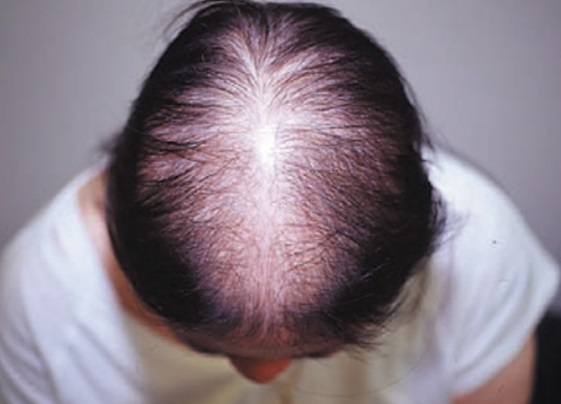
Female pattern hair loss
This is the female version of androgenetic alopecia. It is less common than male pattern baldness, but it still affects about half of women over the age of 50 to some extent.
Causes: a combination of age, hormones, and genetics
Most recognisable symptoms: a widening of the midline parting, a Christmas tree pattern around your parting, diffuse hair loss.
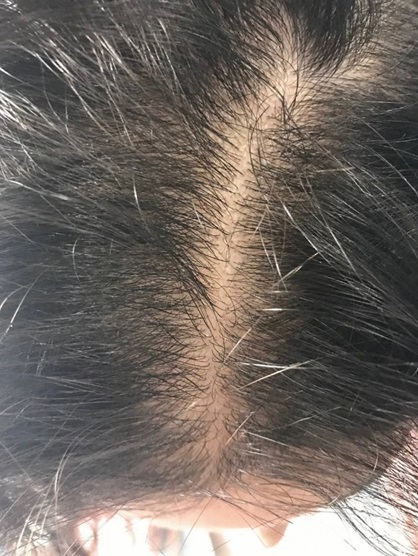
Telogen effluvium
This is normally a temporary condition which occurs after very physically or psychologically stressful events. Telogen effluvium usually resolves itself in about 4 months after the triggering event.
Causes: severe psychological stress, illness, surgery, or other major disruptions to your physical or psychological wellbeing.
Most recognisable symptoms: diffuse hair loss, in some cases, a burning sensation on the scalp.
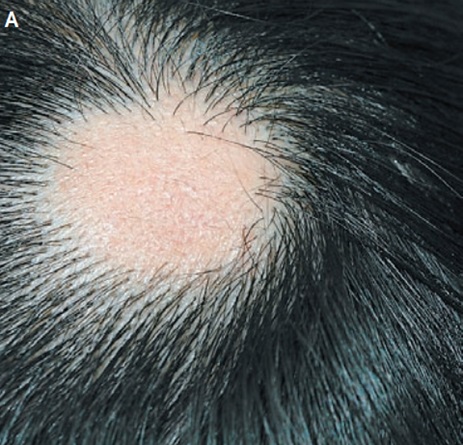
Alopecia areata
This condition affects 2% of the world’s population and can take multiple forms. The most common involves patchy hair loss.
Causes: Autoimmune (your white blood cells are attacking your hair follicles)
Most recognisable symptoms: typically, round, smooth, patchy bald spots, black or yellow dots on the scalp, and broken hairs shaped like exclamation marks. However, in some cases it can manifest with diffuse hair loss (alopecia areata incognita), with large bald swathes on your scalp or with full baldness on your scalp and face (alopecia totalis), or all over your body (alopecia universalis).
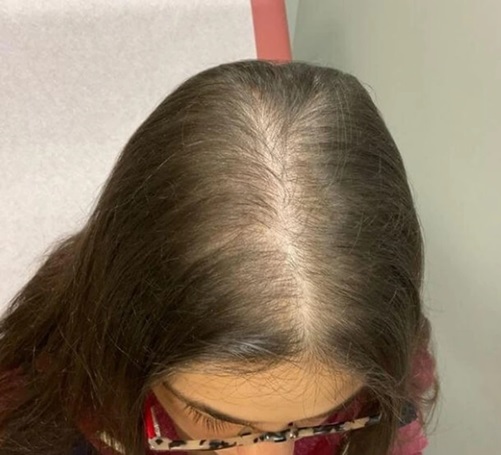
Thyroid hair loss
If your thyroid is either underactive or overactive, this can affect your hair, leading to thinning and changes in your hair appearance and texture.
Causes: hyperthyroidism or hypothyroidism
Most recognisable symptoms: diffuse hair loss, sometimes eyebrow hair loss, changes in hair texture (it can become coarser or finer, and more brittle than it used to be), premature greying.

Nutrient deficiency-induced hair loss
Nutrients such as vitamins, minerals and protein are essential to growing full, healthy hair. Due to a restrictive diet or to health conditions that interfere with nutrient absorption, your body may not get enough of these nutrients, leading to a clinical deficiency.
Causes: insufficient intake or poor absorption of nutrients, such as vitamins B, C, D, E, protein or minerals such as iron, zinc, magnesium, etc.
Most recognisable symptoms: diffuse hair thinning
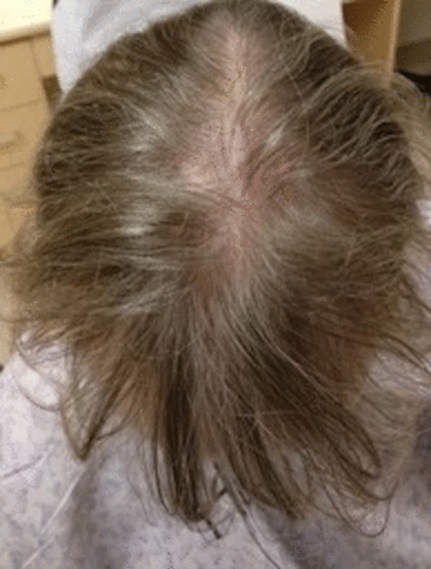
Systemic illness-induced hair loss
Causes: This depends on each condition, but many (e.g. Diabetes, lupus) are linked with diffuse hair loss.
Most recognisable symptoms: Since these hair loss types look similar, visual tests aren’t always the best way to diagnose them. The Ludwig Scale, for example, can only measure the extent of hair loss, rather than the type. Blood tests for hair loss in females are the fastest, most reliable way to determine the cause of hair loss in women.
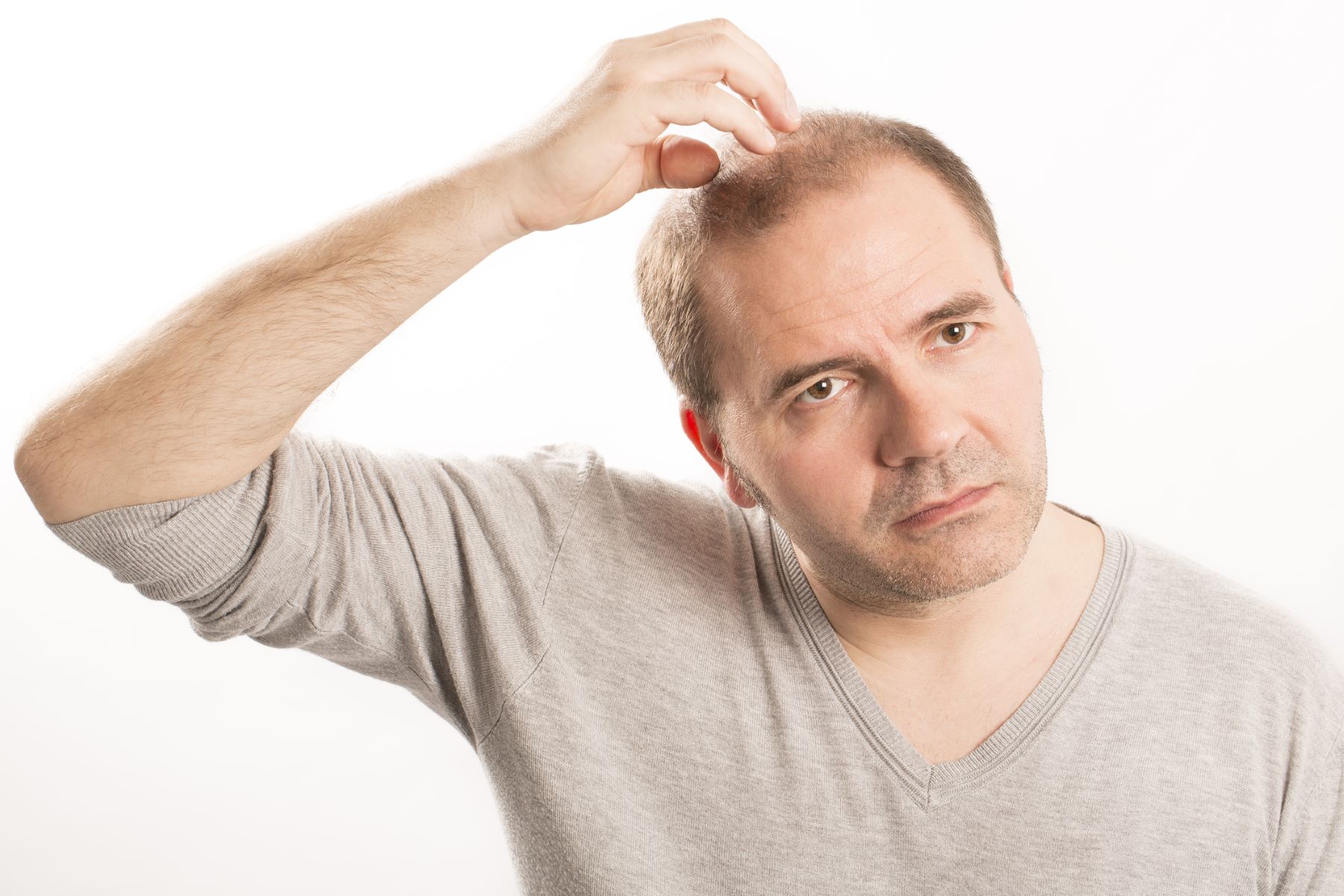
Can men also get hair loss blood tests?
Yes, men can also benefit from blood tests for hair loss, especially when they’re not showing typical signs of male pattern baldness. Most types of alopecia that affect women can also affect men, even if more infrequently.
So if a trichologist suspects that their male patients may be affected by a nutritional deficiency or systemic illness that could be causing their hair thinning, they are likely to order such tests and remove all doubt.
Where should you get hair loss blood tests done?
What other hair loss tests can help diagnose my alopecia?
While blood tests can give you much-needed information, there are also many other trichology diagnosis tests you may be recommended. Here are some of the most common [12]:
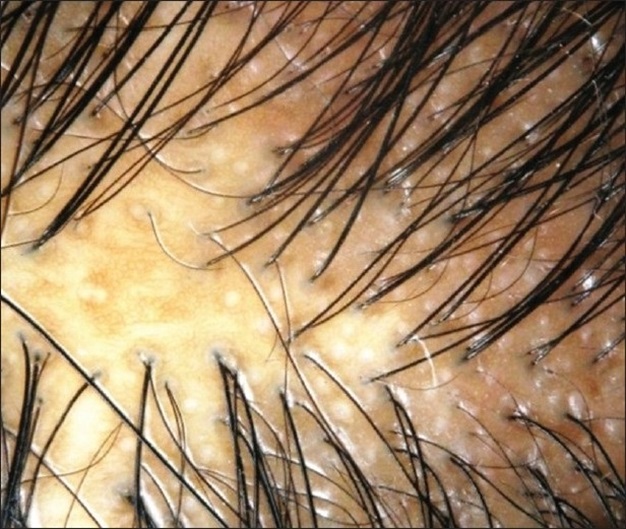
A dermoscopy (or video dermoscopy)
Dermoscopies and videodermoscopies allow the trichologist to get a magnified (20x-70x), high-resolution view of the scalp, strands and hair roots. This allows them to visualise symptoms such as scalp inflammation, black dots, empty follicles or short, broken hairs on the scalp. They can also observe skin hyperpigmentation, signs of infection, rashes or scarring which may be difficult to observe with the naked eye.
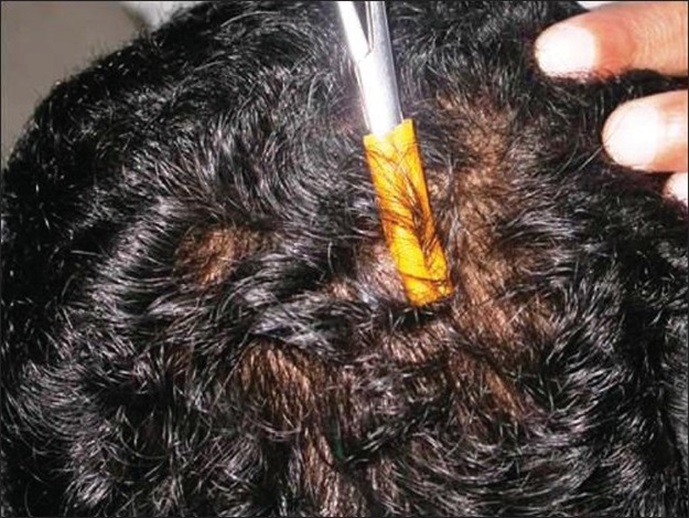
A trichogram (hair pluck test)
The trichogram involves fixing a tuft of hair from a client who hasn’t used shampoo for 5 days with clips. Then, the doctor uses a hemostat covered in rubber to pluck, twist and lift 60-80 of these hairs until they come out. These strands are then cut starting 1 cm above the root.
The roots are kept and taped side by side on a slide. The bulbs of the hairs in a growing phase have a darker color and are delta-shaped, while those in a resting/shedding phase are lighter colored and club-shaped. This allows the doctor to determine the proportion of growing versus shedding hair.
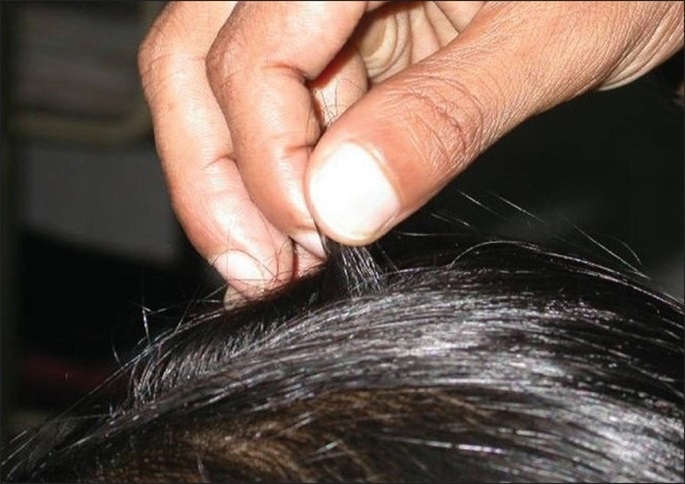
A hair pull test
During a hair pull test, about 20-60 hairs are grasped firmly between the trichologist’s fingers and gently tugged at. If more than 10% of them come off during this manoeuvre, it means the test is positive and you are experiencing active hair shedding.
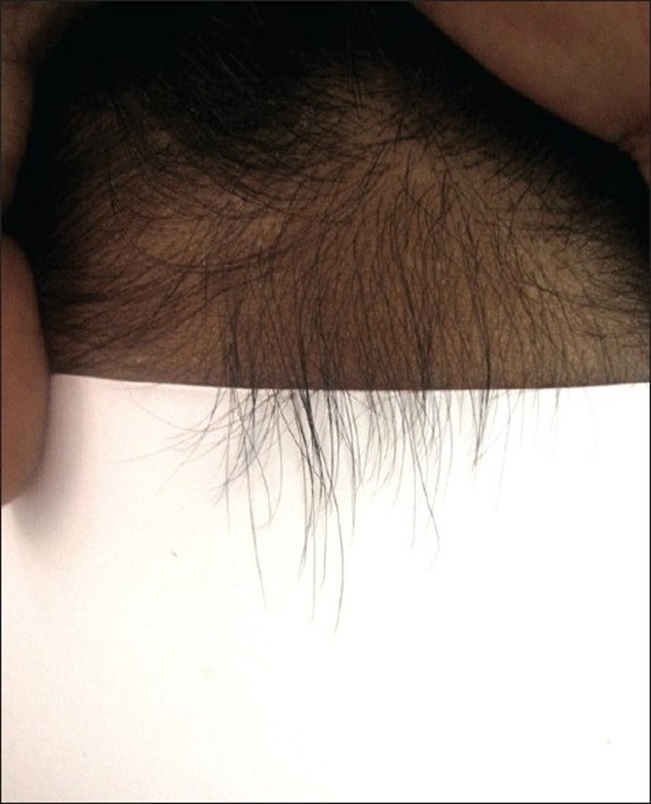
A contrasting felt test (card test)
This test involves using an index card which has black fabric (often felt) on one side and white fabric on the other. The doctor parts your hair and runs the index card along your scalp. This makes fine, short hairs (vellus hairs) or broken ones easily visible, as they are lifted up by the card. The contrasting felt test is often used to spot hair miniaturisation in androgenetic alopecia.
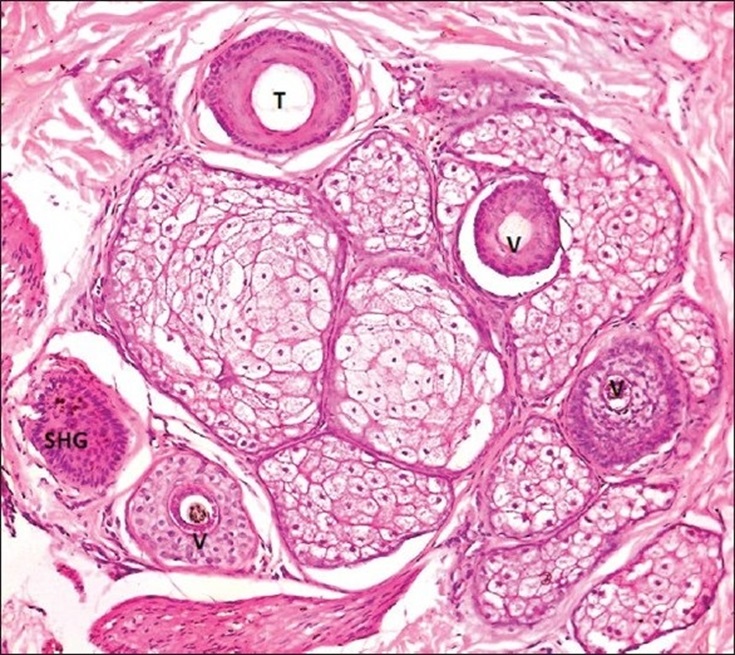
A scalp biopsy
A biopsy involves taking small skin samples from the area that needs inspection (in this case, the problem areas on the scalp) and analysing them under a microscope. This can reveal the inner structure of the skin, and hair follicles.
Normally, an approximately 12.5 mm sample is collected, under local anaesthesia. Biopsies can reveal an abundance of information about scalp and hair conditions, and are useful in diagnosing most common types of hair loss, such as androgenetic alopecia, telogen effluvium or alopecia areata.

What treatments can I get after my hair loss blood test results?
Once you have received your results, your hair doctor will either order more tests as needed, or formulate a diagnosis. If the cause of your hair loss has been determined, you are ready to start treatment. Depending on your condition, the trichologist might recommend:
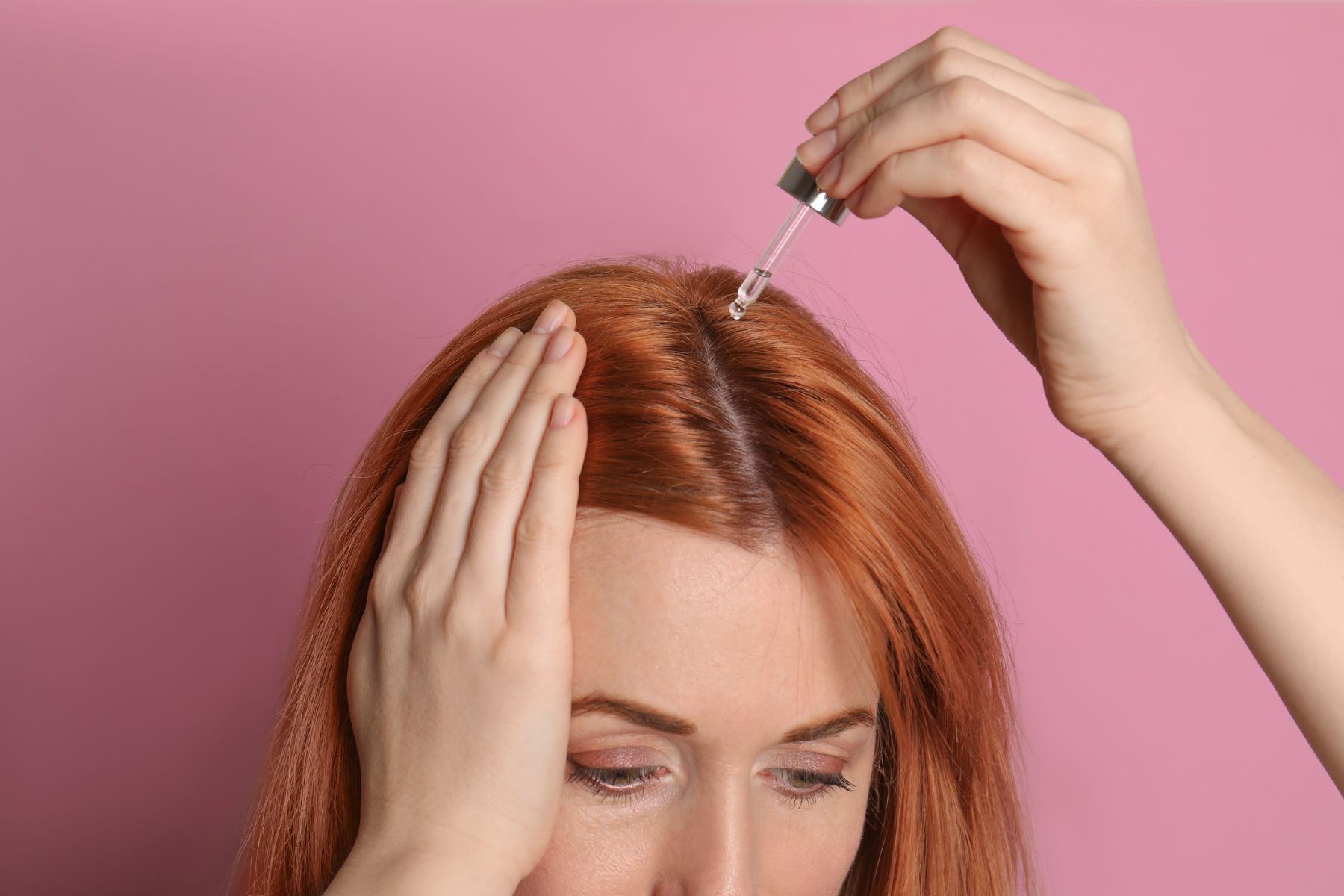
Hair loss medication
Drug treatments such as Minoxidil can help with many kinds of hair loss, from female pattern baldness to chronic telogen effluvium, advanced traction alopecia and alopecia areata. It can even help stimulate hair growth in certain types of systemic or nutrient deficiency-induced alopecia, provided that you are also treating the underlying cause.
Steroid creams or steroid injections can be used to treat inflammatory hair loss, such as alopecia areata or frontal fibrosing alopecia. They can help reduce the inflammation, giving the hair follicles a chance to heal.
If you are experiencing androgenetic alopecia as a postmenopausal woman, you might even be prescribed Finasteride. While premenopausal women can’t use Finasteride due to concerns regarding foetal malformations or hormonal imbalances, it can sometimes be recommended to women who have already undergone menopause.

Hair growth therapies
There are a variety of therapies which can support the process of curbing your hair loss and achieving regrowth, usually alongside other treatments, such as medications. The most effective, scientifically proven such therapies are PRP hair treatment, red light therapy for hair growth and derma rolling for hair growth.
They each function through different mechanisms and can be used together in many conditions for enhanced results. While the evidence is less compelling, many women also try scalp massages for hair growth, which also work as a good method to relieve stress.

Lifestyle changes
If your blood tests reveal a nutrient deficiency and you have been on a restrictive diet, the doctor may recommend you eat more balanced meals, to ensure your daily recommended dose. You may also be recommended supplementation, but it is good to know that for many nutrients (e.g. B vitamins), there is no evidence that it will make your hair regrow.
If you are experiencing a systemic disorder, you may need to get treatment for it or to manage it better if you already had treatment (e.g. type 2 diabetes). If your hair loss is medication-induced, you may need to ask your doctor whether there are any alternatives to the respective medication which do not affect your hair.
Moreover, if you are a smoker experiencing female pattern hair loss or alopecia areata, you may be asked to quit. That is because smoking can cause hair loss, as nicotine can trigger or worsen both of these conditions.
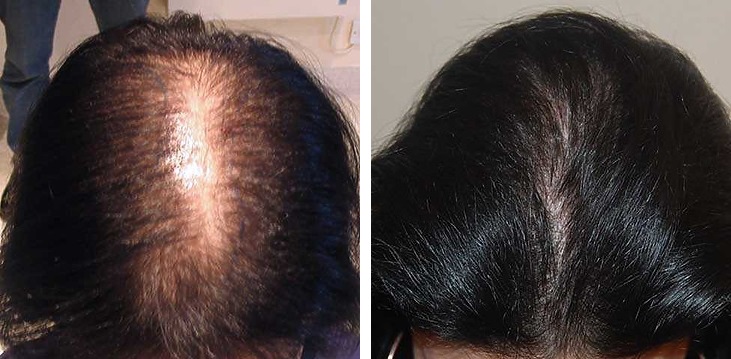
Regardless of ethnicity, the lab workup is the same. Join us for a free 15-minute consult to discuss your issues today:
Hair loss labs
-Comprehensive Metabolic Panel (Protein Count, Sugar level,
-Complete Blood Count
-Vitamin levels for B complex (including B7, B9, B12),C, D, E,
-Mineral levels including iron (iron and ferritin levels), zinc, and magnesium
-Thyroid Panel (for either hyper or hypothyroid)
-Inflammatory Panels: Erythrocyte sedimentation rate (ESR), and C-reactive proteins (CRP).
-Hormone levels: Testosterone, estradiol, Androstenedione, Prolactin, FSH (follicular-stimulating hormone), Luteinizing hormone, Dihydrotesterone (DHT).
If you’re looking for a new Primary Care Doc and are suffering hair loss issues, call us for a free 15 minute consultation. It would be our pleasure to team up with you to help you live your very BEST life!
Call us at Well Medical Center, PC/Towson-Butler at 800-704-1947.



